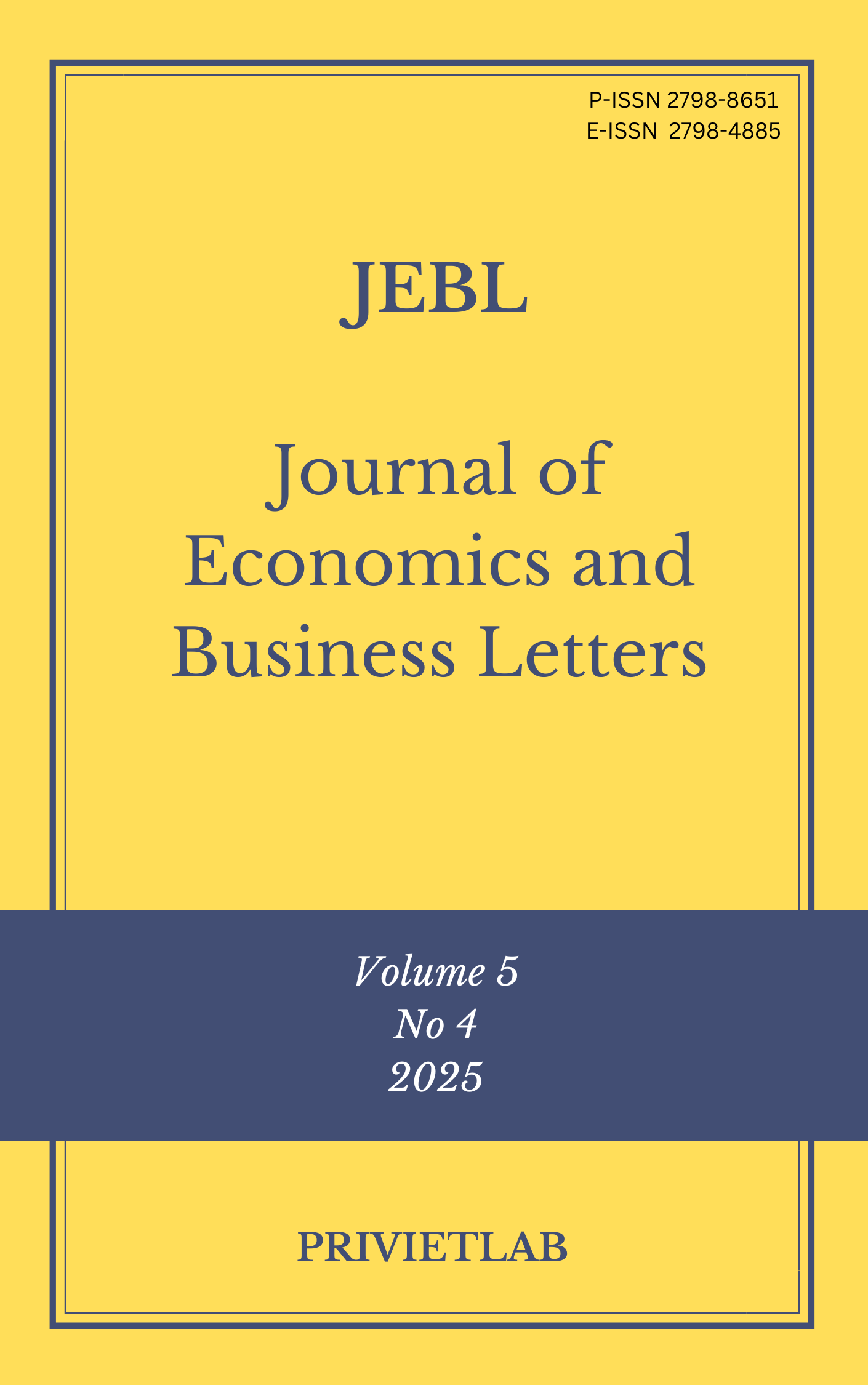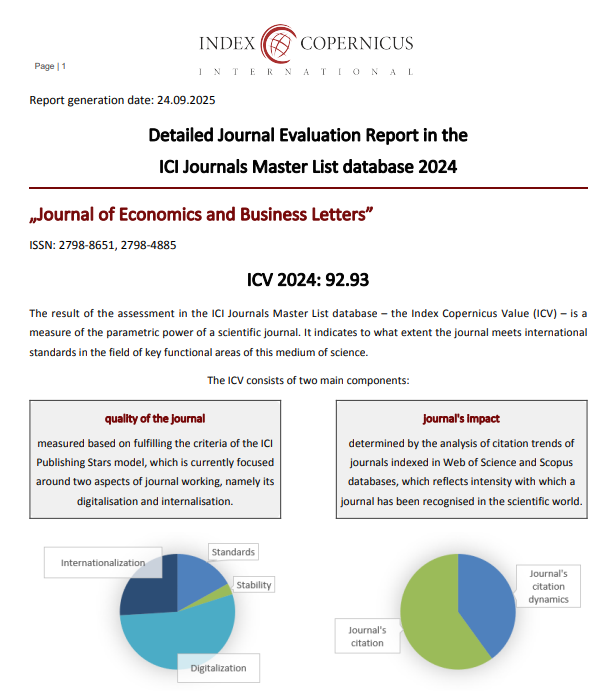Alignment of product design and supply chain for enhancing sustainability and coordination in industries
DOI:
https://doi.org/10.55942/jebl.v5i4.423Keywords:
supply chain, product portfolio, integration, organizational expensesAbstract
Choosing a project portfolio to improve sustainability in the supply chain is a vital issue for industries. The main goal of the portfolio is to align the organization’s strategic objectives with project selection, ensuring that these projects make a meaningful contribution to the overall sustainability of the portfolio. This research specifically examines the integration of product portfolio design and supply chain design in the construction industry. The study utilizes an analytical model and optimization techniques to propose innovative solutions aimed at enhancing the alignment between suppliers and the product portfolio. Improving the efficiency and flexibility of the supply chain is accomplished through optimal coordination of both the product portfolio and the supply chain portfolio. This research explores how supply chain networks align with the product portfolio, focusing on creating flexibility in product portfolio management processes, managing changes, and addressing variability in different characteristics. The results indicate that effective and timely integration of product portfolio design with supply chain design can lead to reduced organizational costs and increased overall productivity. Improved coordination and integration between suppliers and final products have resulted in enhanced supply chain performance and lower ongoing organizational expenses.
References
Ahi, P., & Searcy, C. (2013). A comparative literature analysis of definitions for green and sustainable supply chain management. Journal of Cleaner Production, 52, 329–341. https://doi.org/10.1016/j.jclepro.2013.02.018
Ahuja, R. K., & Orlin, J. B. (2009). Graph and network optimization. Optimization and Operations Research–Volume II, 92.
Bahri, P. A., Bandoni, A., & Romagnoli, J. (1996). Operability assessment in chemical plants. Computers & Chemical Engineering, 20, S787–S792. https://doi.org/10.1016/0098-1354(96)00132-0
Bai, H., & Zhan, Z. (2011, October). An IT project selection method based on fuzzy analytic network process. In 2011 International Conference on System Science, Engineering Design and Manufacturing Informatization (Vol. 2, pp. 275–279). IEEE. https://doi.org/10.1109/ICSSED.2011.110
Barankin, E. W. (1961). A delivery‐lag inventory model with an emergency provision (the single‐period case). Naval Research Logistics Quarterly, 8(3), 285–311. https://doi.org/10.1002/nav.3800080306
Bhamra, T., & Lofthouse, V. (2024). Design for sustainability: A comprehensive review of approaches and tools. Sustainable Design and Manufacturing. https://doi.org/10.1007/978-3-031-xxxxxx
Brewer, P. C., & Speh, T. W. (2000). Using the balanced scorecard to measure supply chain performance. Journal of Business Logistics, 21(1), 75–93. https://doi.org/10.1002/j.2158-1592.2000.tb00153.x
Cohen, S., & Lee, S. Y. (2024). Stakeholder engagement for sustainable supply chains: A review and research agenda. Sustainability. https://doi.org/10.3390/suXXXXXXX
Ferrer‐Nadal, S., Puigjaner, L., & Guillén‐Gosálbez, G. (2008). Managing risk through a flexible recipe framework. AIChE Journal, 54(3), 728–740. https://doi.org/10.1002/aic.11393
Geissdoerfer, M., Savaget, P., Bocken, N. M. P., & Hultink, E. J. (2023). The circular economy – A new sustainability paradigm? Journal of Cleaner Production. https://doi.org/10.1016/j.jclepro.2016.12.048
Huang, Y., & Wu, Y. (2024). Life cycle assessment as a tool for sustainable design in construction. Environmental Science & Technology. https://doi.org/10.1021/esXXXXXXX
Kamble, S. S., Gunasekaran, A., & Sharma, R. (2023). Industry 4.0 and smart manufacturing: A systematic literature review. International Journal of Production Research. https://doi.org/10.1080/00207543.2023.xxxxx
Langenberg, K. U., Seifert, R. W., & Tancrez, J. S. (2012). Aligning supply chain portfolios with product portfolios. International Journal of Production Economics, 135(1), 500–513. https://doi.org/10.1016/j.ijpe.2011.08.018
Mansoornejad, B., Chambost, V., & Stuart, P. (2010). Integrating product portfolio design and supply chain design for the forest biorefinery. Computers & Chemical Engineering, 34(9), 1497–1506. https://doi.org/10.1016/j.compchemeng.2010.02.019
Moinzadeh, K., & Nahmias, S. (1988). A continuous review model for an inventory system with two supply modes. Management Science, 34(6), 761–773. https://doi.org/10.1287/mnsc.34.6.761
Ryu, S. W., & Lee, K. K. (2003). A stochastic inventory model of dual sourced supply chain with lead-time reduction. International Journal of Production Economics, 81, 513–524. https://doi.org/10.1016/S0925-5273(02)00292-5
Sahinidis, N. V., & Grossmann, I. E. (1991). Multiperiod investment model for processing networks with dedicated and flexible plants. Industrial & Engineering Chemistry Research, 30(6), 1165–1171. https://doi.org/10.1021/ie00054a008
Verdecho, M. J., Pérez-Perales, D., & Alarcón-Valero, F. (2020). Project portfolio selection for increasing sustainability in supply chains. Economics and Business Letters, 9(4), 317–325. https://doi.org/10.17811/ebl.9.4.2020.317-325
Waissi, G. R. (1994). Network flows: Theory, algorithms, and applications.
Zhu, Q., & Sarkis, J. (2023). Green supply chain management: A review of the literature and future directions. Journal of Cleaner Production. https://doi.org/10.1016/j.jclepro.2023.xxxxx
Downloads
Published
How to Cite
Issue
Section
License
Copyright (c) 2025 Mohammad Forouzandeh

This work is licensed under a Creative Commons Attribution 4.0 International License.
















